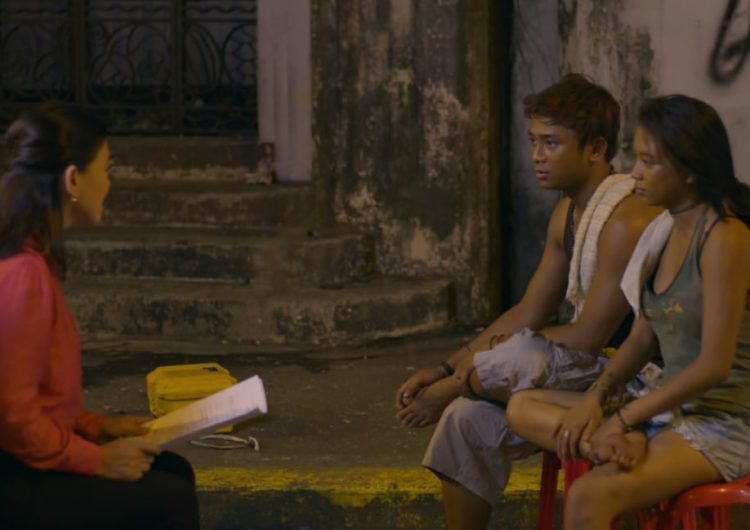Picture this: A well-known fashion designer from a prominent family is dropping their newest collection—each garment selling for five digits minimum. Before the official release, they post a campaign video (surprise, surprise, there is an actual “campaign” along with it) that gets the damn clout.
What’s in it? The face of a child in the slums, eating what looks like leftover rice. On launch day, the designer talks about how their struggles “inspired” them to make these pieces—so much that the kid’s face is drawn somewhere on the expensive ass dresses, with words like “hope” and “smiles” plastered on the packaging, too. All proceeds still go to the designer, by the way.
Now, does that sound “inspiring?”
The term “poverty porn” was initially used to describe marketing strategies that aim to draw pity, guilt and shame. According to CNN, it’s “a tactic used by nonprofits and charity organizations to gain empathy” so they can easily rake in donations—by showing exploitative images of the poor in unpleasant conditions, OFC. So after the pity, guilt and shame come the feelings of “I’m so lucky I’m not in that place” and “I feel so good about myself” after contributing or “helping.”
And while the official definition of poverty porn is still up for debate especially in the arts scene, there’s a reason why the term was coined in the first place. Though art is subjective, contributing to the exploitation of the poor is another bigger conversation altogether. Being an artist means knowing the responsibilities that come with it, after all.
The conversation is pretty nuanced, but we can try to unpack what constitutes an insensitive artwork a.k.a. sensationalizing the poor’s experiences for personal gain. From paintings to films, here are some questions we can ask ourselves.
Am I using poverty as an aesthetic?
Is the inclusion of the poor’s image really necessary in my work? Or is the message intact without it? What kinds of emotion am I hoping to elicit from the viewers using my art?
Poverty porn can often be masked as social realism. But unlike poverty porn, works considered as social realist not only depict the working class and the poor’s experiences but also critique the structures behind these conditions, according to James G. Todd in “Social Realism.”
Who does it empower? Is there a certain savior?
When the elements come together, is justice given to the poor, or are they mere objects asking for or awaiting some sort of salvation? Is there a juxtaposition happening in the piece that highlights one more than the other? What kind of lens are we looking through?
It’s unfair to use the poor’s image as a motif, especially if it’s not our lived reality. Even so, poverty porn misrepresents the poor. As Huffpost says, poverty has many faces and [has] no simple solution. It also “objectifies its subjects, defining them by their suffering and stripping them of the vital components of all human life—agency, autonomy and unlimited potential.”
When the elements come together, is justice given to the poor, or are they mere objects asking for or awaiting some sort of salvation? Is there a juxtaposition happening in the piece that highlights one more than the other?
Poverty porn downplays the gravity of poverty, making viewers think that it is solvable by being generous. It’s not, because poverty is actually systemic. According to critic Diana George, poverty porn defines poverty as a mere consequence of “lack of material resources,” when we also have to dig deeper into the social and justice systems to know what poverty is.
Remember those slum tours in Manila no one asked for? It’s horrifying to think that the privileged—moreover foreign visitors—could just gaze at the poverty-stricken community’s suffering like it’s some form of entertainment.
Does it actually try to solve something?
Making art that mirrors reality doesn’t always mean it’s a step further. It’s also easy to say we want to raise “awareness” but aren’t people already hyper-aware of the situation in the first place because they’re in it? Justifying the use of an image of poverty just to say we’re raising awareness is counterproductive and goes against our intention to “help” the poor.
Poverty is systemic and if we don’t even attempt to solve—or even tackle—this in our work, it may come off self-indulgent and reductive, or simply an exercise in sensationalizing the subjects.
Poverty is systemic and if we don’t even attempt to solve—or even tackle—this in our work, it may come off self-indulgent and reductive, or simply an exercise in sensationalizing the subjects.
Does it encourage more criticism of the power structures behind the people’s state in life or just charity? Now, charity isn’t inherently bad; it’s just not as sustainable as concrete action. In the words of Oaktree, “[Poverty porn] frames fighting poverty as an act of charity, not justice.”
In The Guardian’s example, Comic Relief’s fundraising video starring Ed Sheeran with street children in Liberia received backlash and was awarded Radi-Aid’s “most offensive” campaign award. Since then, non-profit organizations have been scrutinized: Do these fundraising initiatives try to question why poverty exists in the first place?
If it’s really in our best and most honest intention to help the poor, we can start by fighting for their rights and space.
What we can do instead
If it’s really in our best and most honest intention to help the poor, we can start by fighting for their rights and space. Fund their communities. Demand transparency from NGOs. Participate in discussions that aim to shed light on the lives of the urban poor—talk to them, not just pass by them. Engage in movements that directly lead them to conditions they deserve and do not contribute to the passive comparison of the privileged and theirs, just to spark the feeling of relief.
The conversation goes on. What do you think constitutes poverty porn? Tweet us your opinions at @scoutmagph
Read more:
Mike De Leon’s 1992 film about a semi-futuristic PH is now online
This penis art for sale satirizes how art is “easy money” for celebs
Khavn De La Cruz could be your next favorite indie filmmaker
Still from “Pamilya Ordinaryo”

























Comments